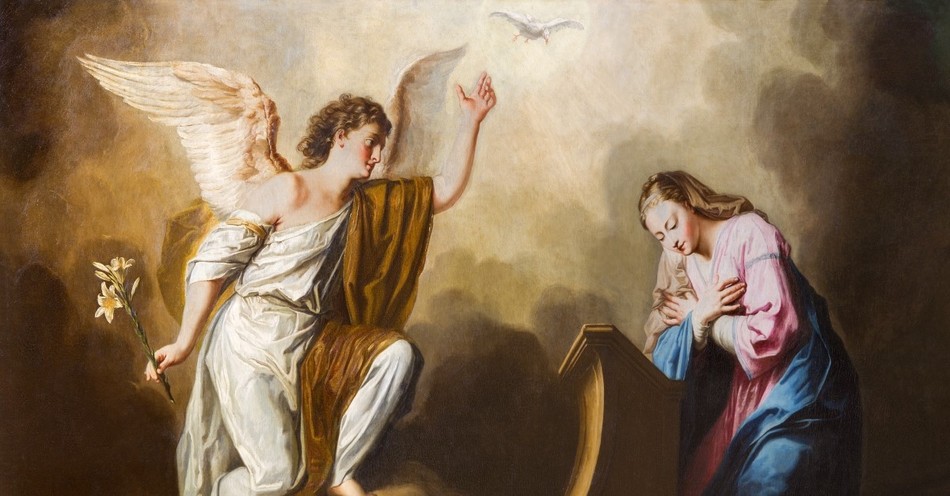Growing up in the evangelical Church, Mary was simply called Mary. For years, I did not understand why great titles were given to her within the Catholic and Orthodox churches of Christianity (i.e., Blessed Virgin, Holy and Immaculate, Mother Mary, and so on). One of the more unfamiliar ones to me was her title Theotokos.
Theotokos can trace its roots back to Scripture and the early church. The term played a key role in two things. First, it helped debunk heretical claims about Christ’s deity. Second, it emphasized the importance of Mary’s role in the Incarnation.
The title Theotokos holds great importance in Catholic and Orthodox Christianity, as do many of Mary’s titles. This view of Mary may be completely foreign to Protestant/Evangelical Christians, which is okay. Part of understanding other Christians is to understand their beliefs and history, let alone Church history.
What Does Theotokos Mean?
In Greek, Theotokos means “the one who gave birth to God,” or to paraphrase, “God-Bearer,” “Mother of God,” or “The One Who Birthed God.”
Before the angry emails get sent out, let’s take a moment to look at the Scriptural and historical evidence for this title.
Where Does Theotokos Come From?
A great heresy arose in the third-century church known as Nestorianism, named after the church leader Nestorius. The Nestorian heresy claimed that Christ could be separated into two persons: his divinity and humanity.
This heresy caused a great scandal and division in the church to the point where an Ecumenical Council was called. The Council of Ephesus (431 A.D.) decided against Nestorius’ heretical claims. The Church Fathers opposed Nestorius by going back to the Scriptures, particularly sections about Mary. To understand Christ’s deity, Mary herself needed to be understood.
When Did Christians Start Using the Word Theotokos?
The Council of Ephesus agreed that Jesus was indeed one person, not two, and Mary’s role confirms this. The Scriptures revealed that Mary not only gave birth to Christ. In giving birth to Christ, she also gave birth to the Trinity’s second person: God the Son, or God Incarnate.
Luke 1:39-44 affirms this point when Mary visits Elizabeth, and the Holy Spirit fills Elizabeth, who declares, “Blessed are you among women, and blessed is the fruit of your womb.” Elizabeth affirms that Mary wasn’t just carrying a human baby. She carried something of divine origin in her womb.
Other verses supporting the Theotokos title include Matthew 1:23 and Isaiah 7:14, both starting the virgin would give birth to Emmanuel (or Immanuel), which means “God with us.”
As a result, the Theotokos title was kept and established, and Nestorius was deemed a heretic. Since then, Theotokos has remained the title for Mary, along with others supported by Scripture, church history, and reason (but that’s an article for another time).
The Theotokos title can be summarized as this:
- Jesus Christ is the Son of God, God Incarnate (Matt. 1:23; 3:17; 17:5, John 1:1-5; 8:48-58; 10:30)
- Mary is Jesus’ mother who was conceived by the Holy Spirit (Matt. 1:18-23, Luke 1:39-4)
- Mary is referred to as “Mother of my Lord” and “Blessed among all women” for carrying God in her womb, bearing his humanity and divinity (Luke 1:39-56).
With all that being backed up by Scripture, the Council of Ephesus was correct to give Mary the title Theotokos.
What Did the Church Say about Theotokos?
Furthermore, we can also see how the Early Church Fathers viewed Mary as the Theotokos and Mother of God. The following statements show their descriptions of her.
“For Luke, in the inspired Gospel narratives, delivers a testimony not to Joseph only, but also to Mary, the Mother of God [theotokos], and gives this account with reference to the very family and house of David.” — St. Gregory the Wondermaker, Four Homilies 1
“The Word begotten of the Father from on high, inexpressibly, inexplicably, incomprehensibly, and eternally, is he that is born in time here below of the Virgin Mary, the Mother of God [theotokos].” — St. Athanasius, On the Incarnation of the Word of God and Against the Arians
“The Father bears witness from heaven to his Son. The Holy Spirit bears witness, coming down bodily in the form of a dove. The archangel Gabriel bears witness, bringing the good tidings to Mary. The Virgin Mother of God [theotokos] bears witness.” — St. Cyril of Jerusalem, Catechetical Lectures, X:19
“I have been amazed that some are utterly in doubt as to whether or not the Holy Virgin is able to be called the Mother of God. For if our Lord Jesus Christ is God, how should the Holy Virgin who bore him not be the Mother of God [theotokos]?” — St. Cyril of Alexandria, Letter to the Monks of Egypt 1
“But since the Holy Virgin brought forth after the flesh, God personally united to the flesh, for this reason, we say of her that she is Theotokos, not as though the nature of the Word had its beginning of being from the flesh, for he was in the beginning, and the Word was God, and the Word was with God... but, as we said before, because having personally united man’s nature to himself...” — St. Cyril of Alexandria, To Nestorius, Epistle 17:11
What Does Theotokos Teach Us about Christmas?
When going through church history and talking with priests about this topic, I asked, “What’s the point of all of this?” How does Mary’s Theotokos title help me understand Christ better, let alone grow closer toward Him?” As time went on, it did help me understand Christ better.
With Advent around the corner, Mary’s obedience, humility, and faithfulness to God hold the utmost importance. Who would have paid attention if Jesus was a regular human? The virgin birth is of great importance, as is her title Theotokos.
When we look at the great leaders of the Old Testament, we see countless people who were faithful to God. If we look even closer, some had extreme revelations with God.
1. Enoch and Elijah were taken up before death (Gen. 5:21-24, 2 Kings 2:1-13).
2. Moses saw the back of God, resulting in a glowing face (Exodus 33:17-23, 29-35).
3. David was a man after God’s own heart (1 Sam. 13:14).
Many people in the Old Testament had great encounters with God, yet none saw him face-to-face. It was not until Mary herself was given the prophecy by Archangel Gabriel that she was to give birth to the Son of God (Matt. 1:26-38) and would be the first to see Him face-to-face along with Joseph.
To say that Mother Mary was “merely a vessel” undermines her role in being chosen by God to fulfill the Old Testament prophecies (Isaiah 7:14; 11:1, Micah 5:2, 2 Sam. 7:16). In accepting God’s will, Mary showed humility and strength, bearing and birthing Christ in this world. She witnessed His coming into the world, His death by the world, and His resurrection for the world.
As we all prepare for the Advent season, let us remember Mary’s role in bringing salvation into the world. Her humility and obedience can inspire us to be faithful to Christ wherever he calls us to be. Peace to you all.
Photo Credit: Getty Images/sedmak

This article is part of our Christian Terms catalog, exploring words and phrases of Christian theology and history. Here are some of our most popular articles covering Christian terms to help your journey of knowledge and faith:
The Full Armor of God
The Meaning of "Selah"
What Is Grace? Bible Definition and Christian Quotes
What is Discernment? Bible Meaning and Importance
What Is Prophecy? Bible Meaning and Examples


_639003522088907085.jpg)
